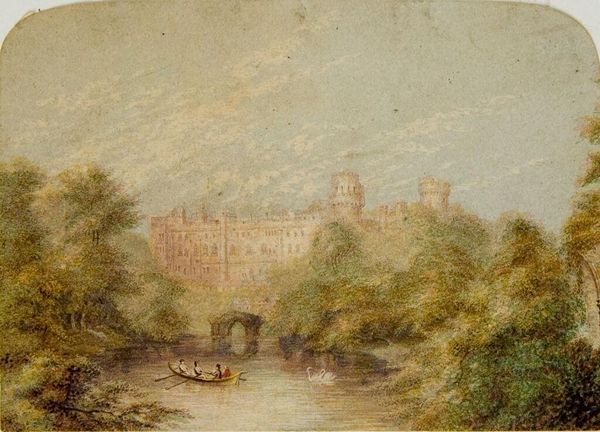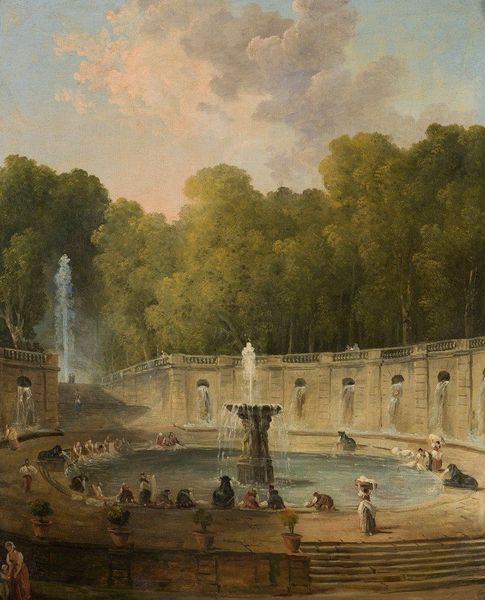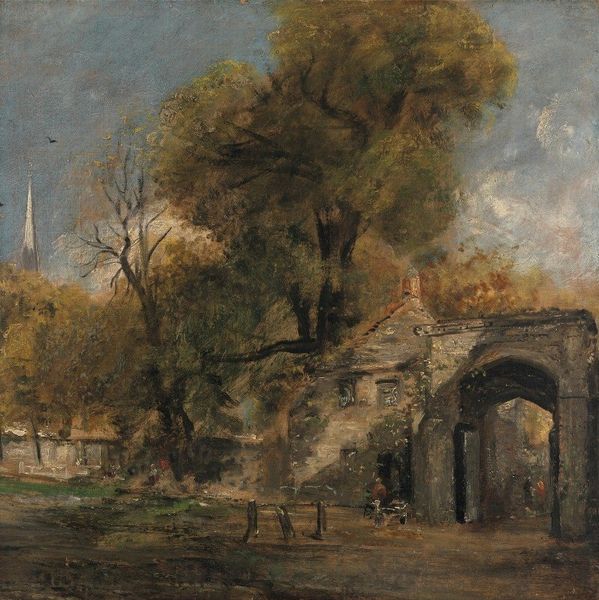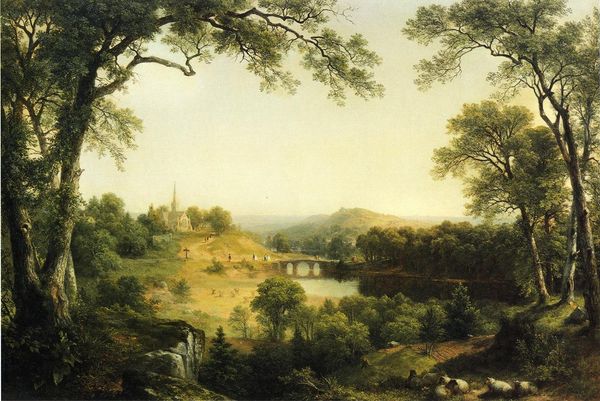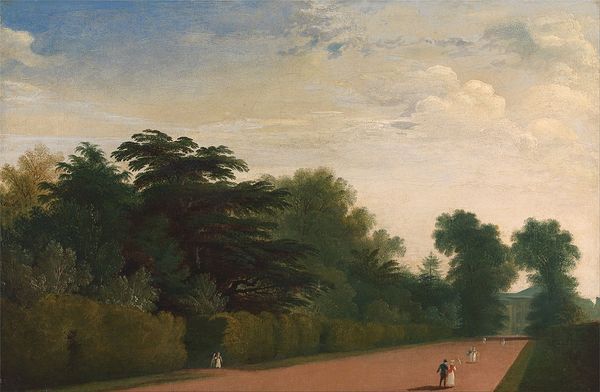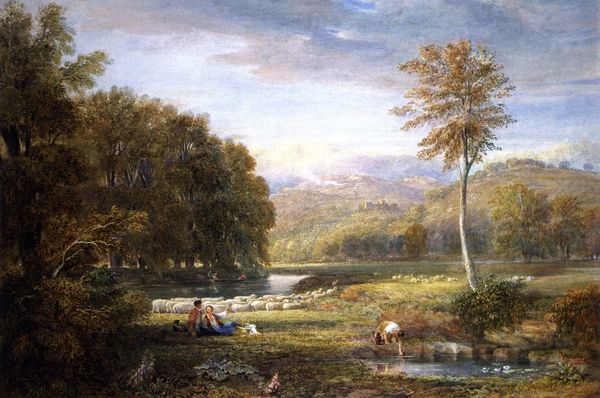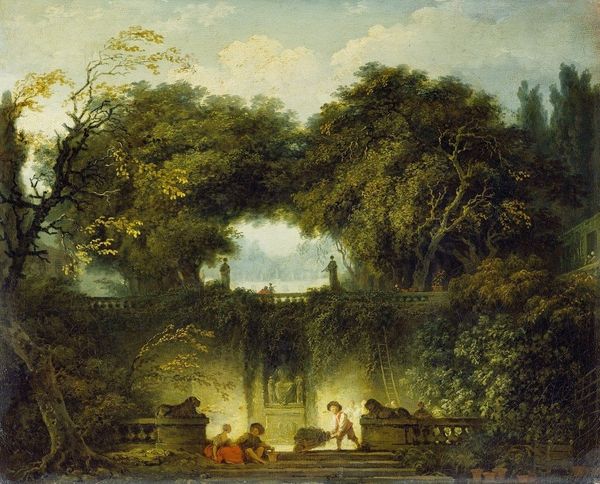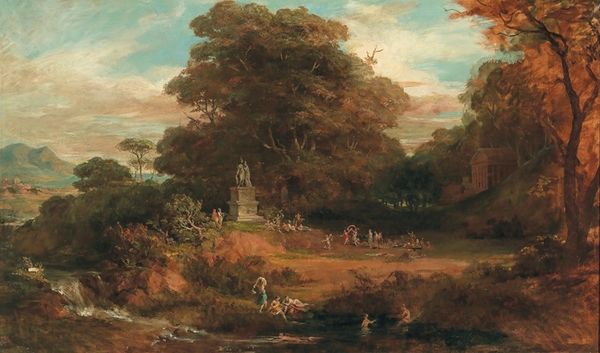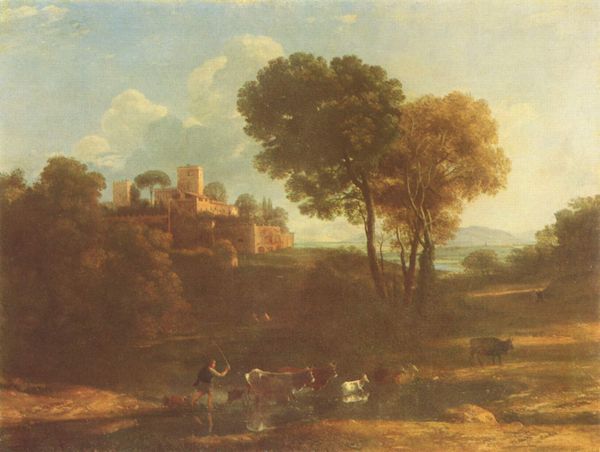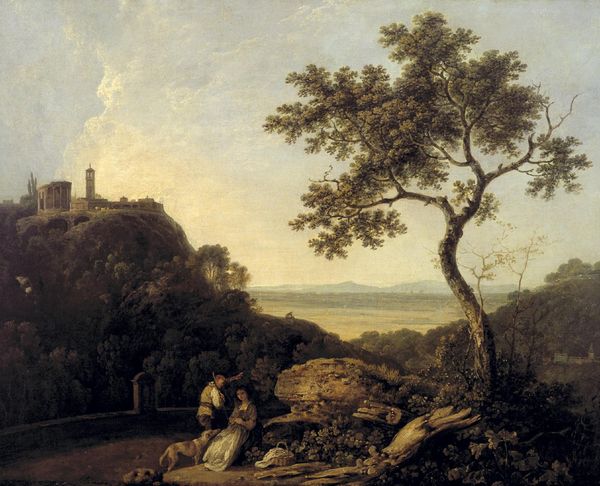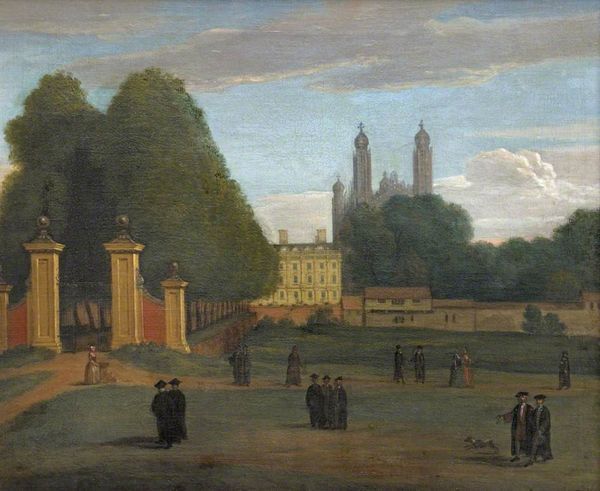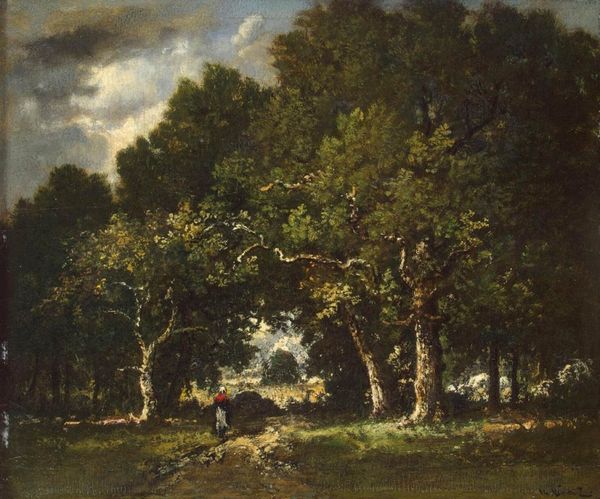
painting, plein-air, oil-paint
#
tree
#
garden
#
sky
#
painting
#
impressionism
#
impressionist painting style
#
plein-air
#
oil-paint
#
landscape
#
impressionist landscape
#
cloud
#
park
#
cityscape
Dimensions: 201 x 124 cm
Copyright: Public domain
Editor: Here we have Charles-François Daubigny's "The Park at St. Cloud," painted in 1865. It's an oil painting, depicting figures strolling and relaxing in a lush park. It has such a calm, idyllic feel... what captures your attention when you look at it? Curator: Immediately, I'm drawn to how this seemingly serene landscape reflects the social stratification of 19th-century France. Daubigny painted this during a period of rapid urbanization and social change. Consider the figures themselves - their clothing, their leisure, they belong to a certain class. This isn't a park for everyone; who do you think is missing from this scene? Editor: I see your point. There are only bourgeois people here, enjoying the leisure of the park. So how does the landscape itself contribute to that interpretation? Curator: Look at the meticulous rendering of the garden, the way nature is manicured. It symbolizes control, power. The bourgeoisie sought to order society just like this carefully cultivated landscape. And what about the light? Daubigny wasn't simply capturing a pretty scene, he was illustrating a particular relationship between people and their environment, at a pivotal time in France's history. How does it make you feel knowing the political undercurrents present within what at first glance, appears serene? Editor: It completely shifts my perspective. I was so focused on the Impressionistic style and the pretty colors that I missed the deeper social commentary. Curator: Exactly. Art often serves as a mirror to society, reflecting not just what is seen, but also who is included and excluded from the picture. The artist chose to highlight one group in society. By considering those absent from the picture, we open to new perspectives about our world today. Editor: It’s incredible how much context changes the reading of the painting. Thanks, this was fascinating. Curator: My pleasure! Considering art through this lens, connecting brushstrokes to broader social forces, makes us more engaged citizens, not just passive viewers.
Comments
No comments
Be the first to comment and join the conversation on the ultimate creative platform.
